Reluctantly homeschooling during Covid-19
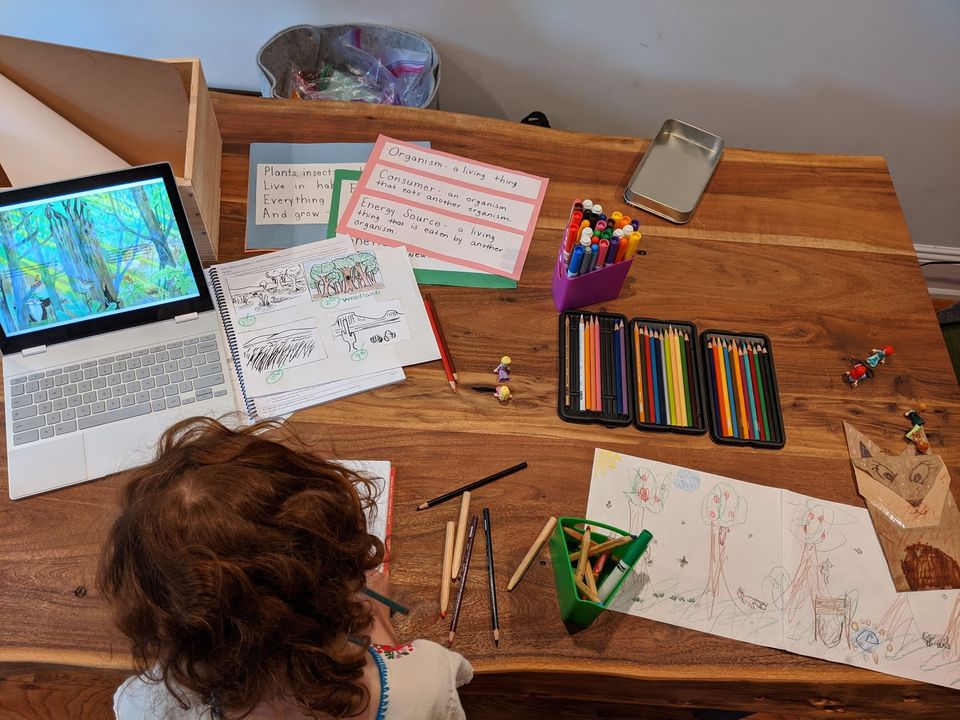
My wife and I became reluctant homeschoolers this year. Not the "fully remote" kind of homeschooling, but the "unenroll our kid and go at it alone" kind.
We didn't decide to homeschool for theological reasons. Rachel and I come from evangelical backgrounds, but if we wanted to raise our daughter in a bubble, we wouldn't have moved to Brooklyn four years ago. We didn't decide to homeschool because we had a bad public school experience. We had a great public school experience. Universal Pre-K exceeded all our expectations, as did kindergarten at PS 32.
Quick story about PS 32 – A few days after we found out Emma had been accepted into their gifted and talented program, and several weeks before school started, we attended an informational DOE meeting and coincidentally sat next to Ms. Watson-Adin, the principal of PS 32. After the presentation, we introduced ourselves and told her that we had registered our daughter for PS 32 that morning.
"What's her name?" Ms. Watson-Adin asked.
"Emma."
"Emma Baugues?"
Our jaws dropped a bit. "How do you know her name?"
"I know all my kids' names," she replied.
"How many kids do you have?"
"About five hundred."
Our respect for Ms. Watson-Adin's dedication to her students has only increased since. We were skeptical of New York public schools before we started – but we had a wonderful experience. They're imperfect, but there was no point between Pre-K and Covid-19 where we thought, "We could do a better job than they're doing."
Hence, our reluctance to pull Emma out.
We're about four weeks into our homeschool experiment, and it's going well enough that I feel some sense of obligation/opportunity to share our story in hopes that it helps other parents navigate the difficult choices to be made this year. That said, I want to acknowledge that we're operating from a privileged position. We have one daughter. She's in first grade. We're expecting our second daughter in November. My wife, Rachel, has been a stay-at-home mom since Emma was born. I work for a software company and have been working from home since March.
The stars aligned to make homeschooling an easy decision for us. I don't want to imply that everyone else should make the same decision, and I know that a lot of folks simply can't. That said, homeschooling is an interesting alternative to remote learning, and we haven't heard a lot of folks talk about it.
Schools in NYC shutdown on March 16, 2020. April through June, we finished out Kindergarten via remote learning. Ms. Watson-Adin and our teachers and made a heroic effort to make it work, but between five year olds on Zoom and everyone suffering through the onset of a global pandemic, I think it's fair to say remote learning in Spring 2020 was a wash.
Coming into September, we felt we had three choices:
- Hybrid learning. A few days in the building, a few days remote.
- Remote learning. Do public school from home.
- Homeschool. Decouple ourselves from the public school system altogether.
Here's how we evaluated those options, and why we eventually decided to homeschool Emma.
Option 1: Hybrid Learning
The first question to wrestle with was, "Do we feel comfortable sending her into the building?" The answer here was, "No."
Based on our mental model of how Covid-19 spreads – by breathing the same air as an infected person for a prolonged duration – we don't believe teachers and administrators can make the in-class experience safe. Even if they were getting adequate training, funding, and guidance from local and federal government – which they're not – they can't defy physics.
But, even if Emma was somehow immune to Covid-19, I'd be concerned about the learning environment that she'd find at school this year. Teaching public school was hard before the pandemic. Now we're asking teachers and administrators to put their lives at risk to teach under unprecedented conditions. We know that stress and trauma makes it harder for adults to do their job, and makes it harder for kids to do well in school. Schools this year will have a lot of stress and trauma.
That fact that Rachel and I don't need childcare made it an easy decision to keep Emma home.
Option 2 - Remote Learning
Any parent not sending their kid into the building is "homeschooling" to some extent. The questions are, "What curriculum do you use?" and "Who's the teacher?" The default solution is to use your local school's remote learning option, but it might make sense to step back and ask, "are the reasons we chose that school last year still valid?"
Overgeneralizing here, but parents choose a school to meet three needs:
- Education
- Childcare
- Community
Before Covid, proximity was the primary factor when choosing a school. You can't get childcare and community unless you're close. This year, your local school's value proposition changed.
Community. Emma, Rachel, and I all benefitted greatly from the social aspects of in-person public school. Each of us have met many good friends there. Unfortunately, Emma didn't get much socialization benefit from daily Zoom calls with fifteen five year olds in the Spring, and parent-to-parent interaction is close to nil when you remove in-person activities.
Now, that's considering what we get when it comes to community. PS 32 also is a place for us to give. When DeRay McKesson speaks about the difference between a resident of a community versus a citizen of a community, he uses the example of citizens choosing to invest in the local public school even if they don't have kids in it. Last year, Rachel and I felt an obligation to invest in PS 32, which we did by volunteering at the school and contributing to the PTA. We've committed to doing the same this year, even if Emma's not enrolled.
Childcare. As a society, I don't think we fully appreciated the childcare component of schools until a whole bunch of parents couldn't go to work because they didn't have a safe place to put their kids. In our case, school meant Rachel had a few hours a day when she could run errands, prep meals, clean the house, or practice self-care after five years of taking care of a kid full-time. Those hours were especially valuable when I was on the road for work.
We're not getting a childcare benefit from school this year.
Education. When it comes to collocated education, PS 32 did a better job educating Emma than we would have. Full stop. Her kindergarten teacher, Ms. Ryan, has been described by many parents as "Marry Poppins." She is so good. Emma's teachers at PS 32 for art, music, dance, gym, and science are so good.
Now that learning has moved online, it's worth asking, "What are the odds that the NYC Department of Education – an underfunded, technologically incompetent bureaucracy that's been thinking about remote learning for six months – is the best available provider of in-home elementary education?"
In the startup world, we consistently see small scrappy startups outmaneuver incumbents because they can laser focus on a single problem and change directions quickly. The DOE employees over 75,000 teachers, is constrained by decades of regulation and powerful unions, and has a mandate to equitably serve over 1.1 million students. It'd be hard to design an institution that's less capable of adapting to change. Alas, they're trying to tackle two big challenges simultaneously: safely reopening the buildings and rolling out remote education.
People and institutions get better at doing things via a feedback cycle of: Do the thing -> Get Feedback -> Make Improvements -> Repeat. The DOE is, charitably, on its second iteration of this cycle. There's little reason to believe that the DOE will be the best provider of in-home education this year. There's little reason to believe that they'll even be competent at it. That's not to take anything away from the teachers, staff, and administrators. They are working so damn hard. The people are great. The institution is ineffective.
Is it possible that there are educational service providers who are more adaptable to change and who have been been iterating on in-home education for years?
Option 3 - Homeschooling
That town hall meeting also made us realize that everything DOE related was going to be chaos this year. Start dates get pushed back at the last minute. Teachers don't have classroom assignments yet. Five different services to sign into, all with different credentials. Zoom for five hours a day starting at 8:30am.... and then somedays there no live instruction at all. Any given day your school might have an outbreak that shoves everything into disarray. Parents stressed out and venting their anxiety in all different directions.
There's a lot of chaos consuming mental cycles before the teaching even begins.
Shortly after that town hall, we decided to decouple ourselves from the chaos. We sent our letter of intent to homeschool to the DOE.
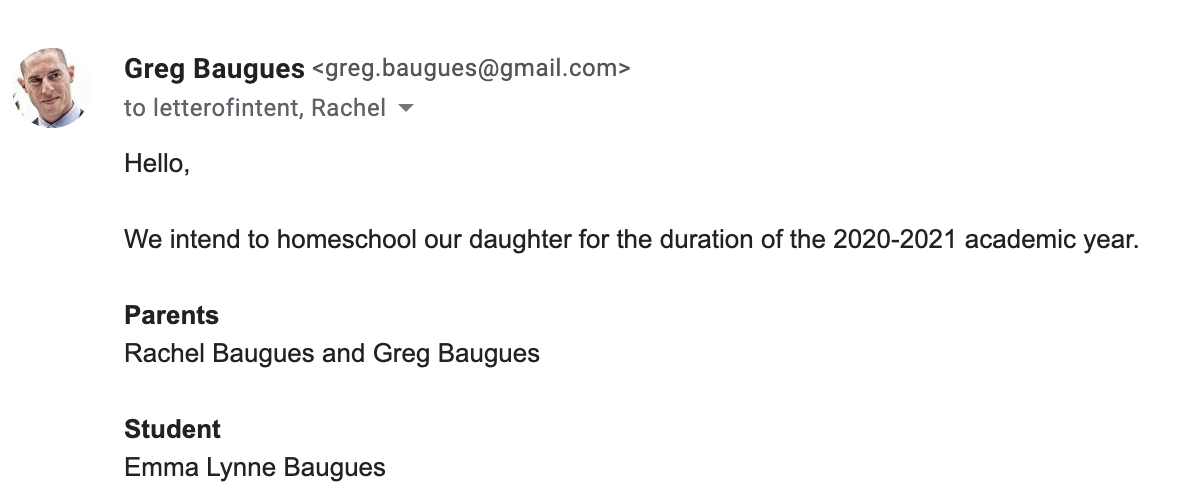
We emailed Ms. Watson-Adin to let her know that we were pulling Emma out but hoped to send her back to PS 32 in 2021. Ms. Watson-Adin called us fifteen minutes later. She said she was sad we were leaving, but that she understood, and that Emma would be welcomed back next year. She talked about a few of the absurdly difficult problems she was trying to solve that week, and said, "all we can do is one day at a time." We told her that we appreciated all the work she was doing and would continue to support her and the school however we could.
Then we started to figure out how to homeschool.
We started by googling, "secular homeschool curriculum." We're still figuring out what to tell Emma about God, but we don't need the same person who creates that material writing our Math book. After evaluating several providers, we ordered the Age 5-7 curriculum from Moving Beyond the Page, which cost about $600. We got immediate access to the digital curriculum. A few weeks later, first grade showed up at our door:
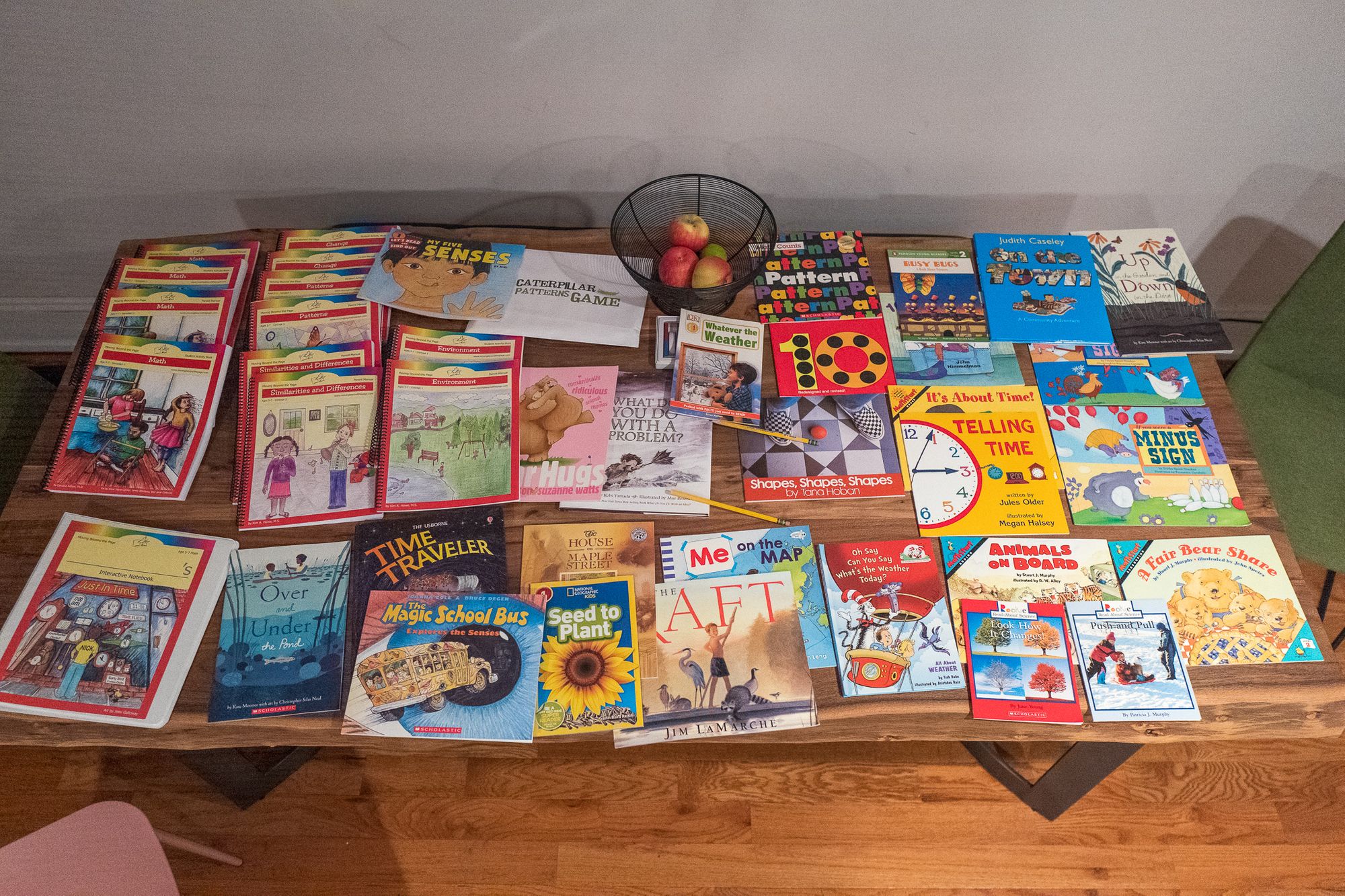
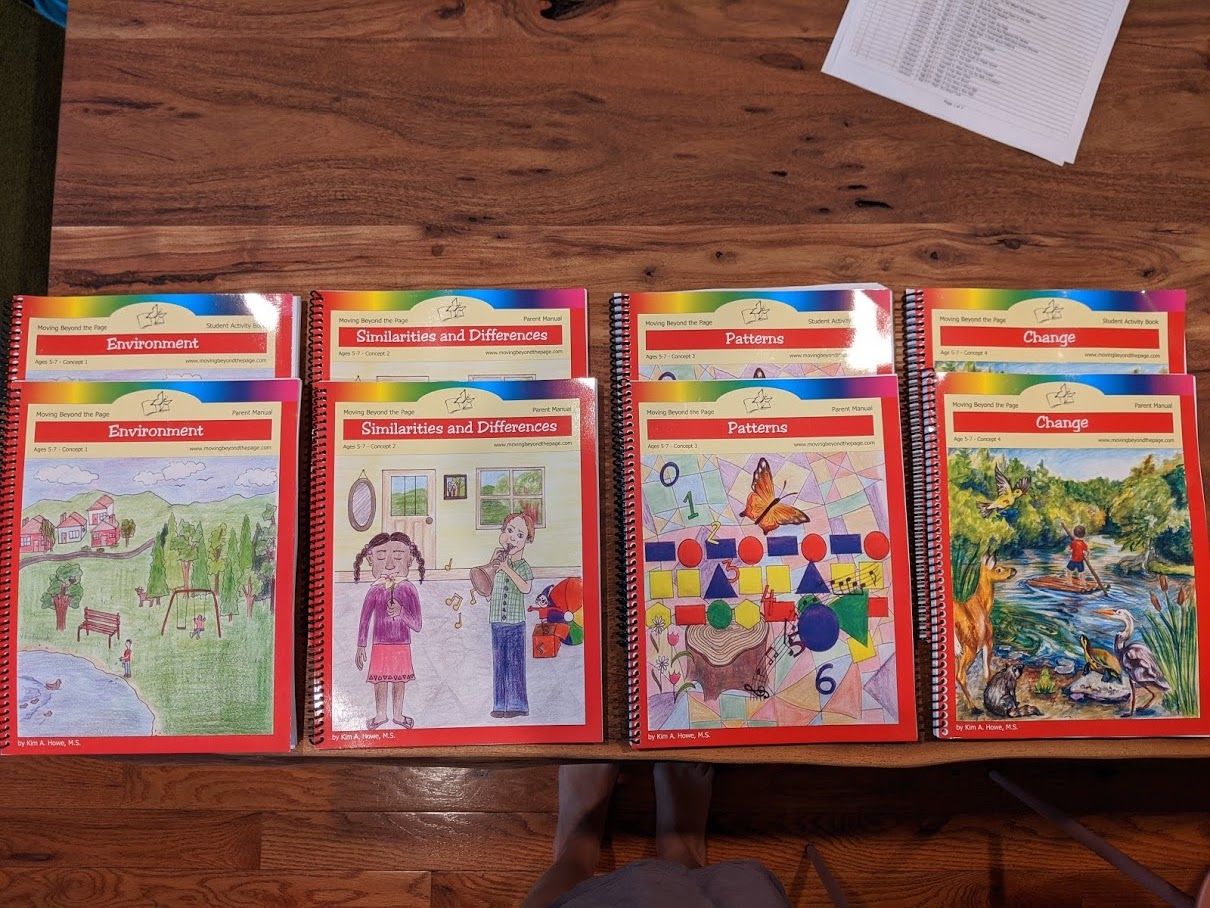
In our house, first grade started in mid-August. It's only been four weeks, so I can tell you what we've been doing, but it'll be a while before we know if it's working or not. At a high level, Rachel and I divide and conquer. I teach Math, Technology, and Chess. Rachel teaches Reading, Writing, Arts, and Science.
A typical school day looks like this: I do math with Emma for an hour before I start work. This gives Rachel predictable time each morning to herself. Some mornings Emma and I work through the Moving Beyond the Page curriculum. Some mornings we play games that we've invented, like "Double Dice Gym" where we take turns rolling the dice, adding the numbers, multiplying by two, and doing that many reps.
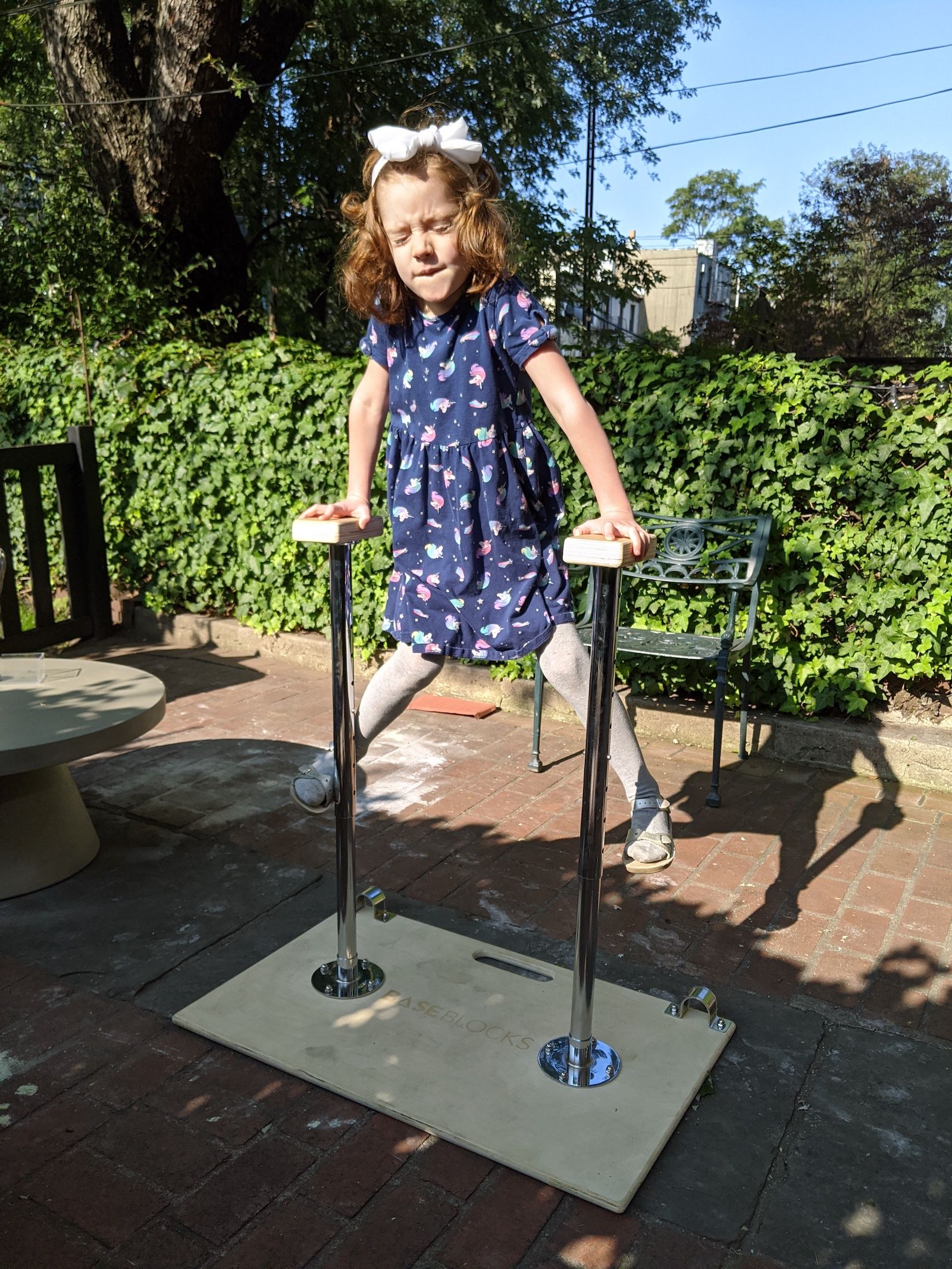
Rachel takes over when I start work. She teaches from the day's Moving Beyond the Page lesson. The formal lesson takes about an hour, and they're done with "school" by lunchtime. The afternoons are a mix of reading, art, and play – sometimes independently, sometimes together. Between the afternoon and evening, Rachel spends at least an hour each day reading to Emma. Over summer they got through the first three Harry Potter Books.
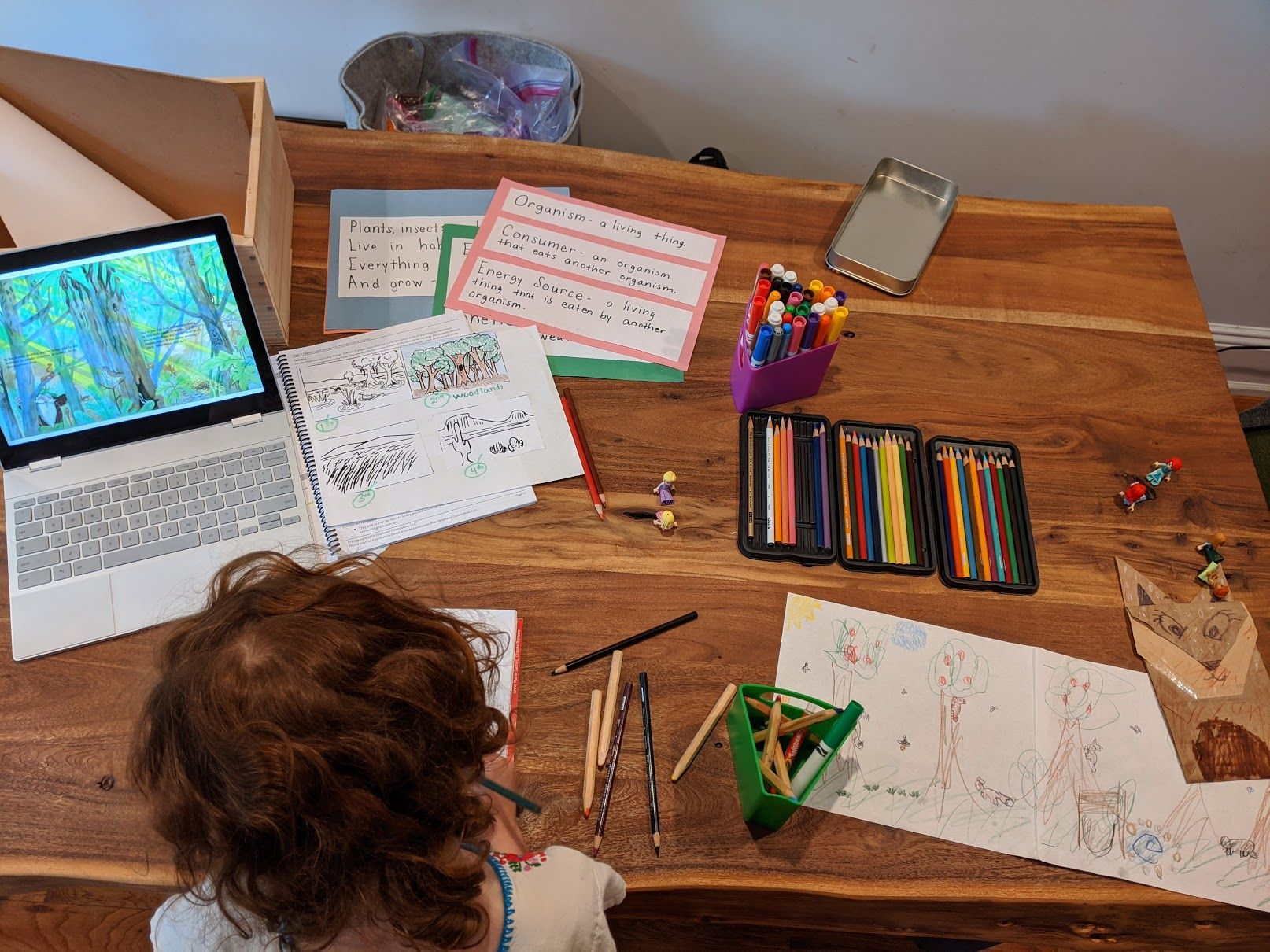
At the end of my workday, Emma comes back to my office and we spend an hour on Chess Kid, Typing Club, Minecraft, or coding in on repl.it. Then we all have dinner together. On Saturday mornings, Emma and I go to Prospect Park for nature walks and backgammon.
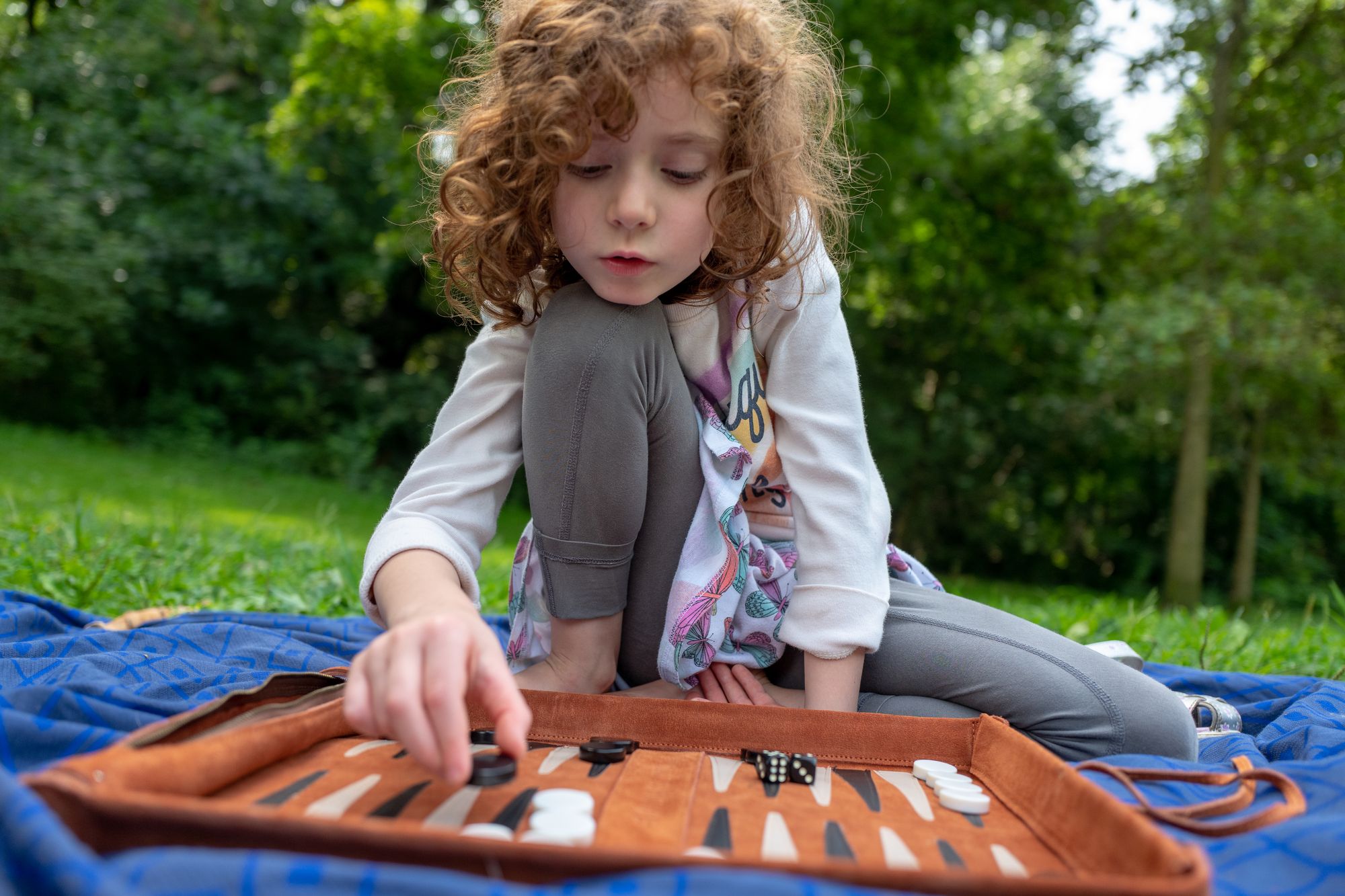
We have a lot of flexibility. Some days I have unavoidable meetings. Some days Rachel has an appointment. We hit our "ideal" routine 3-4 times a week, and it's pretty easy to make up a lesson. Or not. We got a four week head start on the DOE – we're not stressing out if we miss a lesson here or there.
We're in the honeymoon period. School for us has been novel, fun, and low stress. We'll see how we feel in another month, or after the baby comes. For now, we're thankful to have the time, flexibility, and spare mental cycles to figure out a way of doing school that works for us.
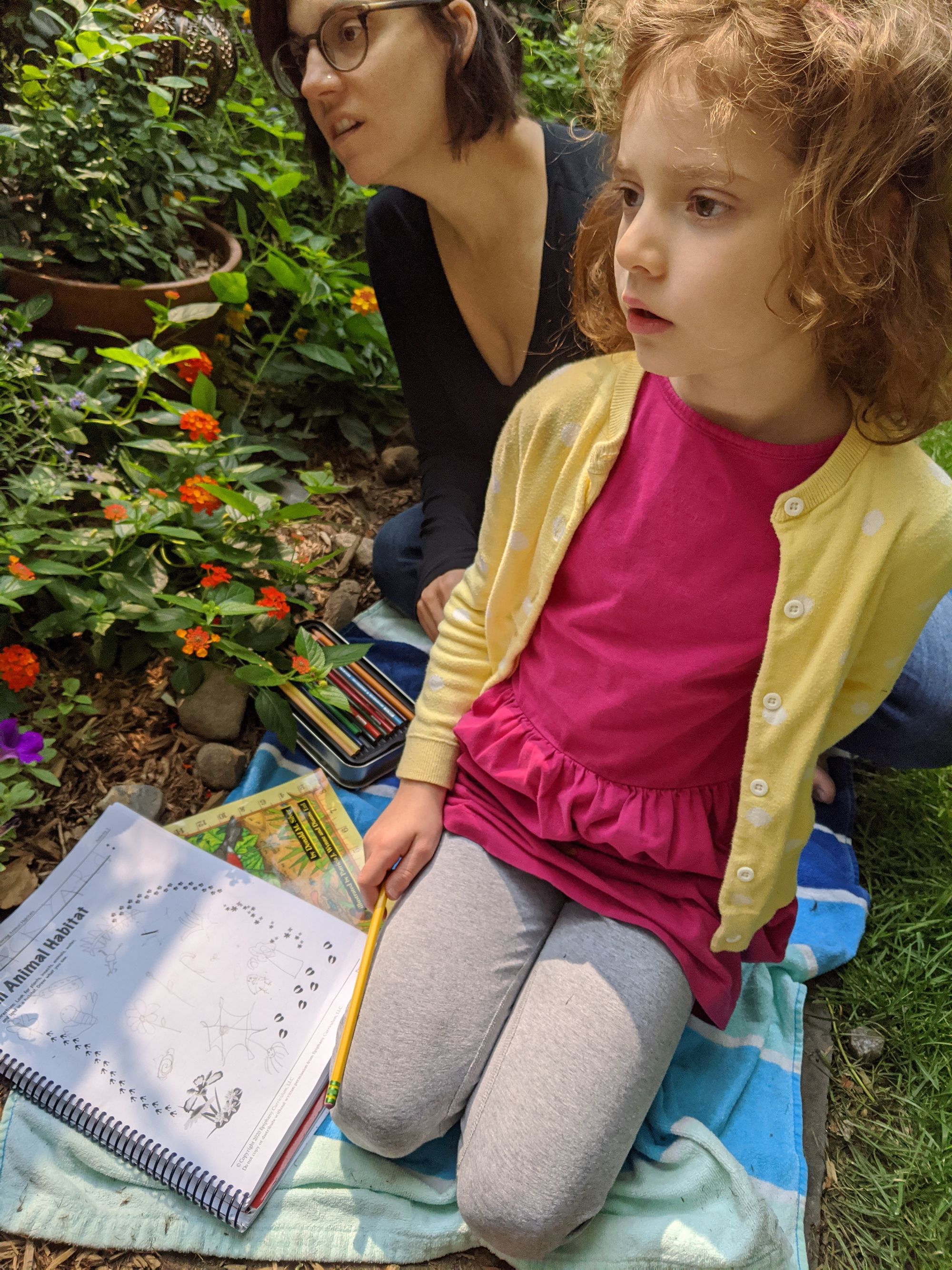
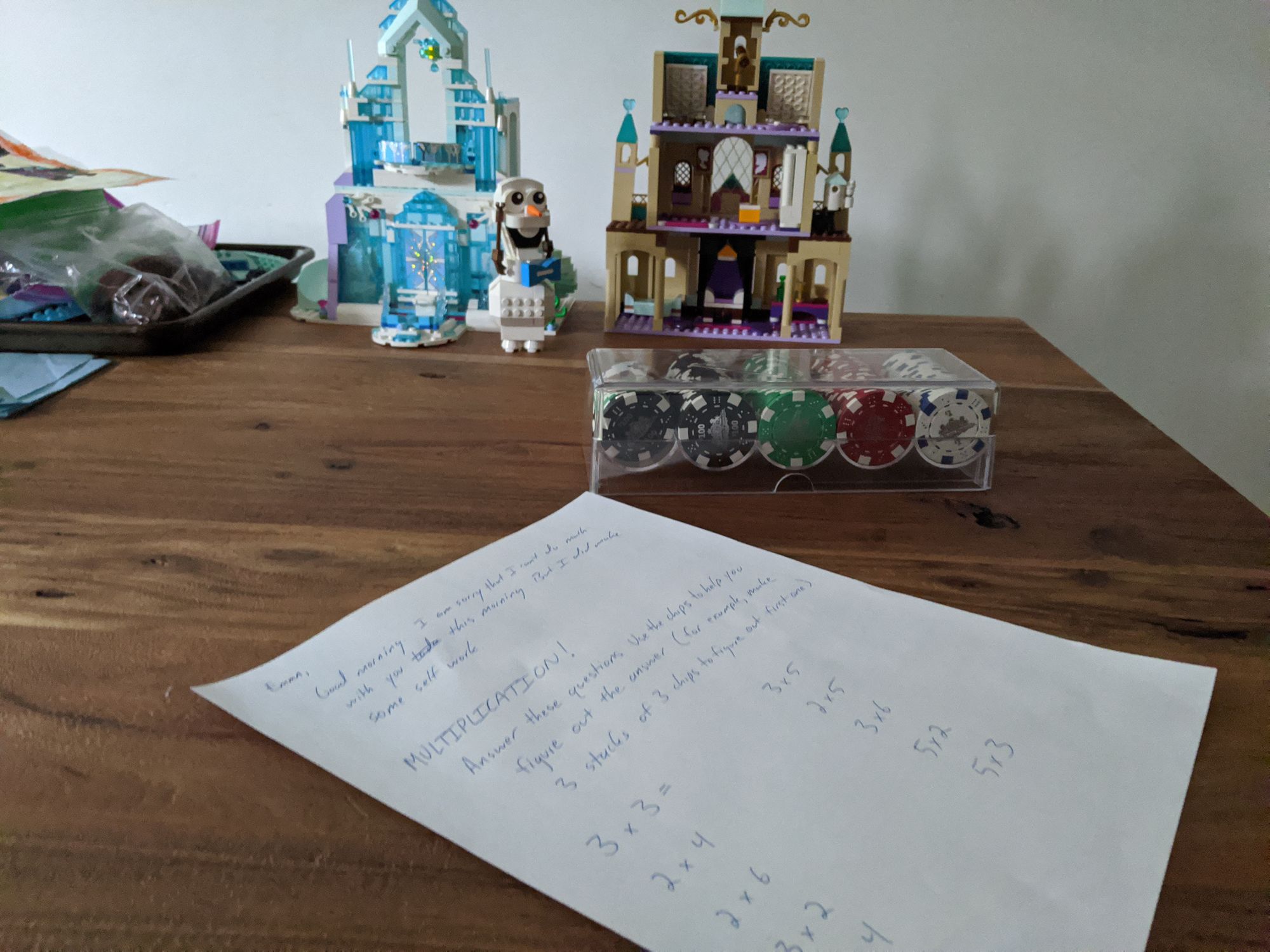
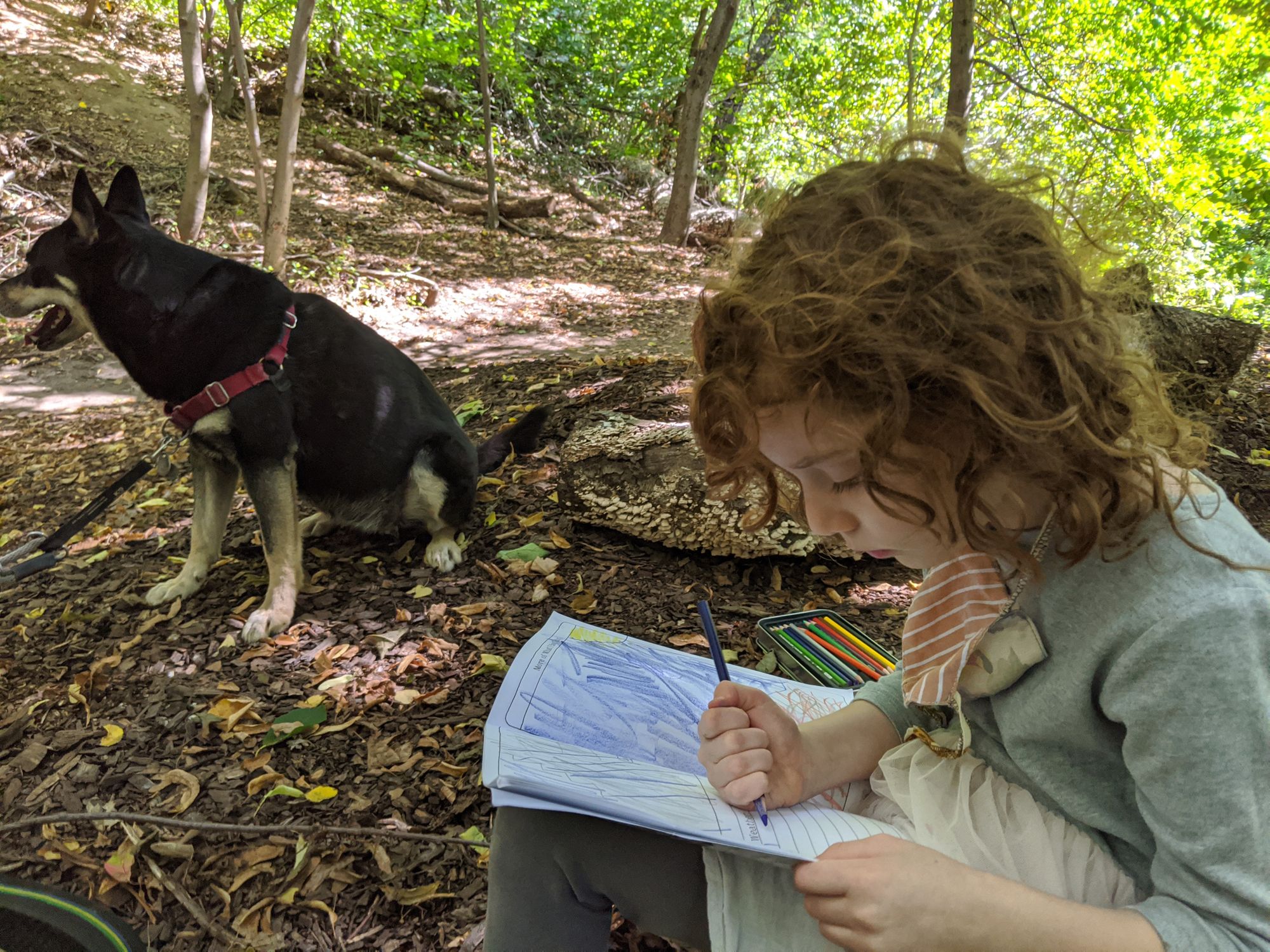
Many thanks to Rachel for feedback on this post, and for being my co-teacher.